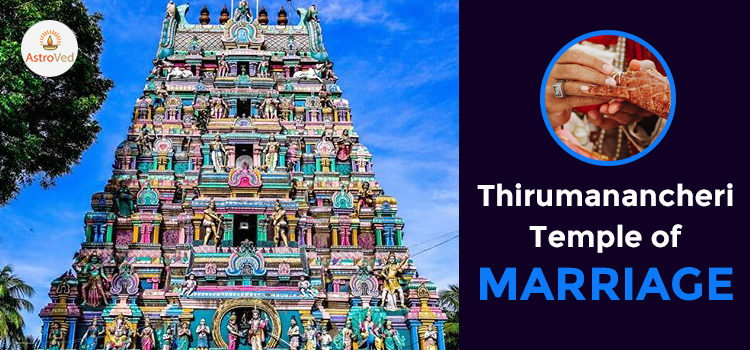Legend of Shiva and Parvati Marriage
The most delightful facet of the story of Shiva and Parvati is their marriage on earth. The divine
Goddess Parvati consort of Shiva once expressed to have a wedding on earth with him.
According to legend in Mount Kailash, Shiva and Parvati had a celestial fight, and he cursed his consort to take the form of a cow. Parvati came down to earth as a cow and wandered around. Shiva predictably repented and sought Vishnu’s help to regain Parvati’s feminine form.
Vishnu assumed the role of a cowherd and took care of Parvati, his sister. He soon released her from the curse in a place called Thiruvaaduthurai. Parvati took a bath in the Cauvery river and shed her image as a cow. She assumed her usual form in Kuthalam.
Parvati went to live with Sage Bharata Muni as his daughter. Bharata Muni approached Shiva for his hand in marriage to Parvati. Hence, Parvati was granted her wish of marriage on earth. Myth has it that Parvati did tapas (penance) in this Sthalam (location). The Sthalam (place) where she got married to Shiva is called Thirumanancheri.

History of Thirumanancheri Temple
The Thirumanancheri Temple lies 15 kilometers away from Nagapattinam district near the Cauvery river, and 6 kilometers from Kuthalam. This temple has the sublime blessings of divinity and extremely popular with devotees.
Shiva goes by the name of KalyanaSundareswarar and his consort Parvati, by the name of Kokilambal. Chola Queen Sembiyanmadevi built the temple. Shiva is also called Uthvaanganathar in Sanskrit. The story goes that Shiva and Parvati came to earth and were wedded.
Uthvaaganathar became angry and cursed Goddess Kokilambal. She came down to earth and became the daughter of Bharata Muni. Although the couple had not met, they were united in their hearts. Later, Parvati married Shiva according to the local customs and traditions. Shiva and Parvati experienced human nuances as they went through the process on earth and were wedded.
There is one form of Shiva in Tapas (penance), called Dakshinamurthy. Manmathan, the God of Love, aimed an arrow of flowers at Shiva Perumaan. Shiva became angered, and opened his third eye, burning Manmathan to ashes. His wife Rathi Devi implored Shiva to retrieve her husband. Shiva relented and gave MangalyaPitchai to Rathi Devi, and unified the couple in this place, called ThirumanacheriSthalam.
Divine Power of Thirumanacheri Temple
Shiva and Parvati stand as a divine couple in this temple. Shiva, as Kalyana Sundareswarar blesses the devotees and Goddess Kokilambal, is at his footsteps, her head bent in shyness. People flock to this temple, praying for early marriage, and offering thanks when they are blessed. The divine couple removes obstruction caused in any delayed marriage. Those couples experiencing separation in married life also visit this temple and pray to KalyanaSundareswarar, to be united. Couples also visit this temple seeking blessings for the birth of a child. They visit the temple on
Amavasya (New Moon day) at the Raghu Bhagavan sanctum and offer garlands. They offer prayers for fulfilling their wish.
Significance of Thirumanacheri Temple
The temple has regular crowds. Couples offer special prayers and perform the
Swayawara Parvati Homam, considered the best Pariharam(remedy) for an early and happy
marriage. They receive the garlands of the God and Goddess, which they preserve carefully. After marriage, they return to the temple wearing the same swathes and offer thanks in the form of prayer. This temple is a blessing for those seeking marriage, resolving issues in marriage, and seeking child boon.
Festivals and Poojas at Thirumanacheri Temple
The temple performs and weekly daily poojas. On the first day of the Karthigai month and during
Pradosham, priests perform poojas with special Abhisheka (sacred wash). The temple celebrates Navarathri, Vijayadashami, Thirukarthihgai, and Arudra Darshanam.
In the month of Chittirai, every year, the temple celebrates the Thirukalyana festival lavishly.







